Self Build VAT Reclaim Rules: VAT Notice 431NB for New Builds Explained
It’s important to understand the self build VAT reclaim rules when building a new home. When you self build or convert a property into a home, you are entitled to zero rated VAT on materials and services for your project.
If your self build contractor is VAT registered, then you just won’t pay them VAT (it’s a bit different if you’re working on a conversion project – keep reading to find out more). But you will still need to pay the VAT upfront on any materials you buy yourself and then go through a process of reclaiming that money once your project is completed.
“Keep all your documents safe, as this is the information that HMRC requires to be able to award a reclaim,” says Wayne Turner from Claim It Back VAT Refunds. “Any lost invoice is effectively lost money, as you won’t get a refund without the correct statements.”
Self Build VAT Reclaim Rules – What Does Notice 431NB Mean?
VAT Notice 431NB (NB as in ‘New Build’) is the scheme that covers VAT reclaims on self build properties in the UK (this includes the Isle of Man, but not the Channel Islands). The premise of self build VAT reclaim is that you are building your principle private residence. You can’t claim the VAT back if you plan to use the property for a business purpose.
So, if you are building to sell for a profit, let it out or run a bed and breakfast, then you won’t be allowed to reclaim VAT. Don’t worry if you intend to work from home, though, using one room as an office is considered acceptable by the taxman.
Can You Claim Back VAT on Extensions & Renovations?
Any work you undertake on an already completed building will not be covered by the zero rated VAT scheme. This includes projects such as refurbishment, adding an extension, converting the loft or constructing an annexe or new garage. All of these will attract VAT at 20% on materials and labour − even though they are ‘new build’ additions to the property.
There are some exceptions, though. A home renovation project on an existing dwelling that has been empty for 10 years also counts as a conversion under the VAT reclaim scheme.
This rate applies to all labour and materials used on a renovation project, but it cannot be reclaimed – it is up to your builder to invoice you correctly. The best way of proving whether a house has been unoccupied is by checking council tax payments or utility bills.
CASE STUDY Traditional-style timber frame house built for £500,000Arthur and Lydia Achard reclaimed £45,000 of VAT on their £500,000 farmhouse-style timber frame self build in Northumberland.
When Lydia, her husband Arthur and the couple’s two children started to outgrow their modern townhouse in Alnwick, the pair began seeking out opportunities to put down roots elsewhere. The Achards were primarily interested in properties in the north of Northumberland, but thought self building was going to be out of their budget. However, in 2018, a rundown former mill came up for sale and the couple recognised the land’s self build potential. Planning permission had already been granted to redevelop the site with a new home, but this still required some back and forth with planners until their final design was accepted.
Designed by Giles Arthur Architects, the house comprises two wings; the first a two-storey structure clad in stone reclaimed from the demolition of the original mill. This connects to an L-shaped timber-clad wing via a glazed link.
Photo: Kate Buckingham |
VAT Reclaims for Conversion Projects
According to HMRC, a project eligible for conversion is defined as a non-residential building that either has never been used for residential purposes, or has not been used as such in the 10 years prior to the commencement of work. The most common examples being agricultural buildings such as barns, shops and redundant schools or churches. The end result of the project must be to convert the non-residential building into a dwelling.
Under VAT431C, you may claim a refund for the builders’ work on a conversion of a non-residential building into a home. This covers the costs relating to work to the fabric of the building, such as installing windows, roofing materials, electrical rewiring etc.
“On conversions, you should initially pay 20% VAT for materials purchased from suppliers and a reduced rate of 5% VAT to contractors,” says Andrew Jones, managing director at Andrew Jones The VATman. So, any eligible invoices from VAT-registered contractors and trades (whether for labour-only or labour and qualifying materials) should use the reduced 5% rate. If you’re buying materials directly yourself, you’ll need to pay the full 20% at source.
VAT Reclaim Rules for Listed Buildings
The rules have changed for listed buildings. VAT on approved alterations used to be reclaimable, but as from October 2012, all repairs, alterations and extensions on listed buildings are liable to VAT at the full 20% rate.
However, there are exceptions here, too, in that if you obtain permission to demolish all but the facade or shell of a listed building, then the construction work could be classified as a new build and the VAT element might be eligible for reclaim. It’s a tricky area with some fairly strict definitions of what is and isn’t allowed, so it’s best to check with HMRC before you start work.
Using VAT Registered Contractors
At the end of your build, you can put a reclaim in for any materials you personally bought to get the full 20% VAT paid back. However, depending on the type of project you’re doing, there are some differences when it comes to what your contractors charge you.
If you’re undertaking on a self build (replacement houses also come under this bracket) and your contractor is VAT registered, they shouldn’t be charging you VAT for any labour or materials. If your project counts as a conversion, the contractor will charge you a reduced rate of 5%, which you can reclaim at the end of your project.
HMRC will not refund any incorrectly paid VAT. That means if you pay your contractor 20% VAT and it should have been zero rated, you won’t get that money back. “If your builder is not VAT registered, you do not want them to purchase or supply any materials because the VAT will be lost,” says Andrew Jones. It’s okay to use a contractor that isn’t VAT registered, but you’ll need to buy the materials yourself and make sure the invoices are in your name to be able to reclaim the VAT paid.
QUICK GUIDE VAT reclaim mistakes to avoidAndrew Jones from Andrew Jones The VATman shares the top mistakes that people make with their self build VAT reclaim
|
What Do You Need to Know About the Self Build VAT Reclaim Rules Before Starting a Project?
The amount of VAT reclaim you’ll make at the end of your project will depend on how you go about your build. For instance, if you’re taking on the role of project manager and buying all materials yourself then you’ll have more to invoice for than if you’re working with a main contractor who is sourcing and purchasing materials on your behalf.
You can reclaim VAT on all the normal materials that go into a home, such as bricks, windows, timber, electrics, plumbing etc. Most fit-out products count, too, such as boilers and lighting (keep reading for more). And you can also include delivery charges if they’re within the same invoice as the item.
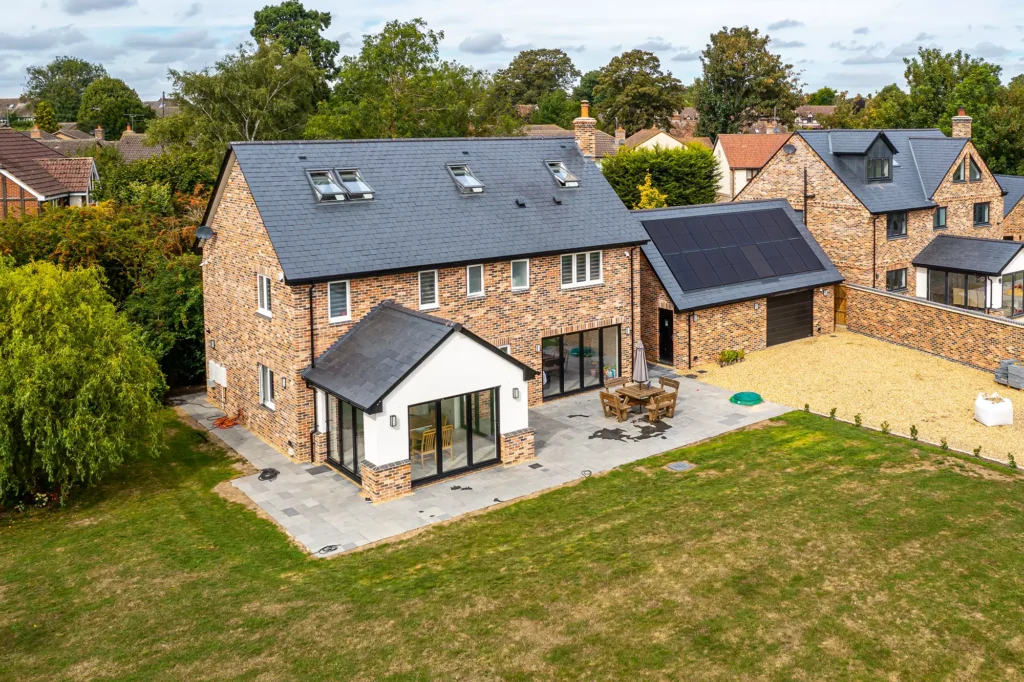
Set just 100 metres away from their previous home and located on a Bedfordshire village boundary, Alan and Nicola Burton self built a brand new three-storey timber frame dwelling with the help of a Potton pre-insulated structure. They reclaimed £12,000 back in VAT. Photo:
Keeping track of what you’re spending and what VAT you’re being charged is essential – making spontaneous purchases and not noting them down could cause you headaches later on. Make sure that invoices are in your name as a private individual. Keep hold of all receipts and invoices. It’s also a good idea to track your spending in a spreadsheet as you go.
“Always check your invoices when they arrive or at least before paying because the price agreed can sometimes not be the price invoiced out to you,” says Andrew. “Steer clear of invoices in the name of your project manager, relatives, your builder or your business name (even if it incorporates your name).”
If your builder tells you that you’ll get a better rate by quoting their name at, say, a builder’s merchants, it’s crucial to make sure that it’s your name down on the invoice. “In most cases, by the time I review the invoices, the project is almost complete and getting this error corrected can be difficult, sometimes impossible, which often leads to a shortfall in your VAT refund,” says Andrew.
New Build VAT Reclaim ListYou can reclaim VAT on building elements and materials, such as:
If you’re in doubt about any items or materials on your new build VAT reclaim list, either call HMRC’s VAT DIY helpline for advice, or just include it in your submission anyway. The worst that can happen is that someone puts a line through the item and it gets rejected. New Build VAT Reclaim Exemption ListThere are some exemptions from what you can include on your VAT reclaims, such as:
Always double check if you’re unsure if something counts, as you only get once chance to submit your VAT reclaim to HMRC, so it’s crucial to get it right first time. |
How to Make Your Self Build VAT Reclaim
You will have six months from your project completion certificate to submit your VAT reclaim (this was increased from three months in December 2023). In 2023, HMRC also introduced an option to submit claims online rather than only via post. Note that there are different forms to fill in depending on whether your project is a new build (VAT Notice 431NB) or conversion (VAT Notice 431C). Along with all your invoices, you’ll need to include your planning permission, detailed professional plans and evidence that the building work is finished.
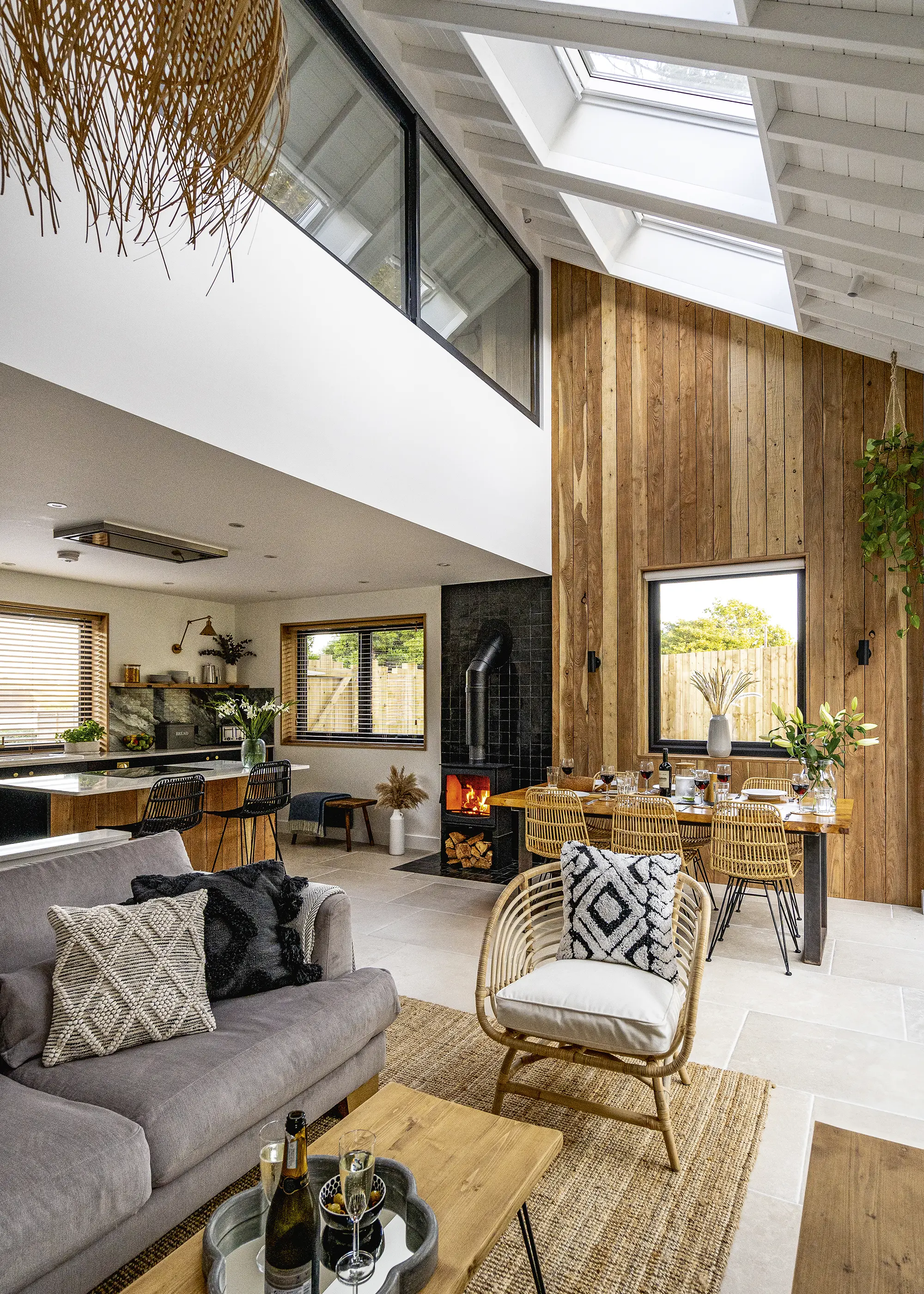
Self builders Jan Burroughs & Kate Sutherland created their low-energy timber frame home in Cornwall for £572,000. They reclaimed £24,000 of VAT. Photo: Jonathan Wigmore
“The top mistake self builders make is submitting either non-eligible items or documentation which is not a valid VAT invoice,” says Wayne. “Submitting a non-eligible item will not have any major effect on a reclaim as HMRC will usually just reject these items. But if a non-eligible document is included on the assumption it is a valid invoice, then HMRC will reject this and require the correct documents to be re-submitted.”
Working with a self build VAT reclaim specialist will offer peace of mind that everything is done correctly – after all, we’re talking about a significant chunk of money coming your way once this is signed off, so you want to get it right. “My top tip is to employ a specialist in submitting VAT reclaims for self builds to put in your claim for you,” says Wayne. “Whilst I appreciate it is seen as extra expense on top of an already costly build, it will more often than not save you more money in the long run than what the agent charges for their fee.”
FAQs
Can I reclaim VAT on a timber frame package self build?
“Yes, in the UK you may reclaim VAT on eligible building materials and services – including package builds – through the VAT Refund Scheme for DIY Housebuilders, provided this is a new home. VAT Notice 431NB is the scheme that covers VAT reclaims on UK self builds. Note that most labour costs are already zero-rated, so they’re not part of the process,” says Sarah Mathieson from Fleming Homes.
“Additionally, items such as furniture, appliances and tool hire are excluded from the scheme. You only have one opportunity to submit a claim, which must be made within three months of receiving the completion certificate. The reward for keeping meticulous records throughout the project is a welcome cash bonus that’s the cherry on top of moving into your new home.”
Where should I spend and where should I save when self building?
It’s important to assess your budget and carefully delegate your funds to ensure you’re building a high-quality home. “Your architect will work with you from the start to understand your needs and create a brief that accounts for your budget and priorities,” says Adam Collier, director at Kast Architects. “The best way to save money in a cost plan is by keeping the design and floorplan simple and opting for basic internal fittings (such as kitchens) that can be upgraded later on.”
You should look to invest in your building’s structure as this will yield efficient, lasting results. “We make sure that the performance of the building is the priority by investing in high levels of insulation and specifying good-quality windows and doors to ensure an airtight fabric,” says Adam. “When building a high-performance, airtight home you should also invest in a good ventilation system, such as mechanical ventilation and heat recovery (MVHR), to ensure a healthy environment.”
“Working with a quantity surveyor (QS) when designing a home will guarantee the cost of every element of the build is considered at the design stages. They will also account for every penny spent on site so there are no surprises in the construction phase of a project.”
How much does it cost to build a house in the UK?
“One of the best ways to get an idea of your build cost is by looking at the price per m² of completed floor space, otherwise known as the gross internal floor area (GIA). “In 2025, an average self build is likely to cost £2,500 per m². However, this is just a guideline. A cost conscious, self-managed bespoke home project could come in as low as £2,200 per m², while a high-end build with intricate detailing could easily exceed £2,800 per m²,” says Build It’s project management expert, Mark Stevenson.
The performance standard you aim for will impact your costs. “A house built to minimum Building Regs will be cheaper than one designed to Passivhaus standards, which could cost around 20% more due to the additional insulation, various technologies, airtight construction, product certifications and completion testing,” says Mark. “With these costs in mind, if you’re planning a 200m² home, a typical build cost could range from £440,000-£560,000, depending on a range of factors (such as size, location, and build route),” he says.
How can you develop an accurate, realistic self build budget?
Before doing anything else, figure out how much you can afford to spend. “You should start by assessing your available funds, including savings, equity and potential for borrowing. It’s wise to speak to a mortgage broker early on to get a proper understanding of your borrowing power and level of affordability,” says Mark Stevenson.
“Once you know your total budget, compare it to your expected build costs. If the numbers don’t add up, now’s the time to adjust your plan – whether that means reducing the scale of the house, simplifying the design, or exploring cost-saving construction methods,” says Mark. “Don’t forget to check the total development cost (land + build + fees) against the estimated end value of your completed home. Ideally, you’ll create equity in the process, but if the figures don’t add up, reconsider your approach,” he says.
What are self build mortgages and how do they differ from standard mortgages?
“Unlike standard mortgages that release a lump sum upfront, self build mortgages release funds in stages and are tailored specifically to your project. A self build mortgage is typically released at the following stages: land purchase, foundations laid, roof structure complete (wind and watertight), internal works (first and second fix), and final completion. You only pay interest on the funds released, making this a cost-effective and practical way to finance your dream home,” says Tom McSherry, national business development manager at BuildStore.
This article was originally published in May 2020 and has been updated with new content in August 2024. Words by Mike Hardwick & Emily Batesmith.


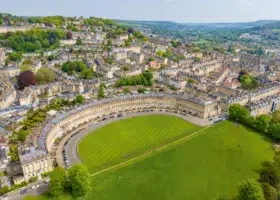
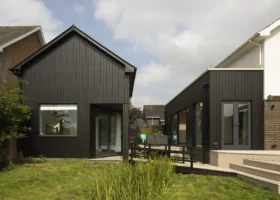

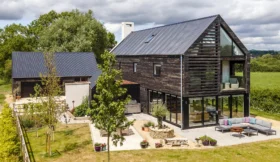
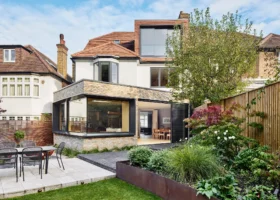
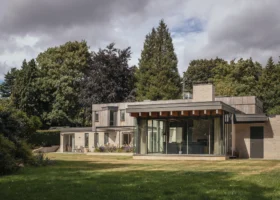

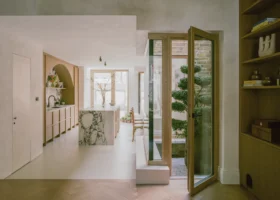
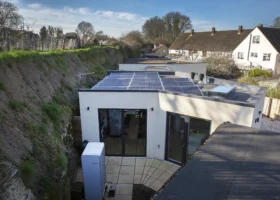
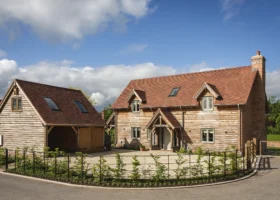




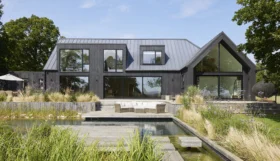
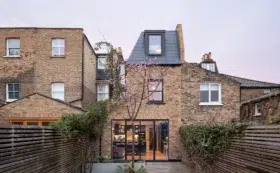
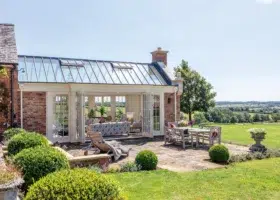
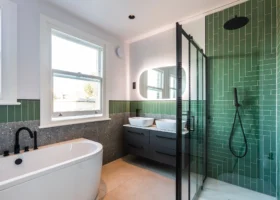
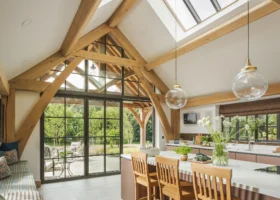
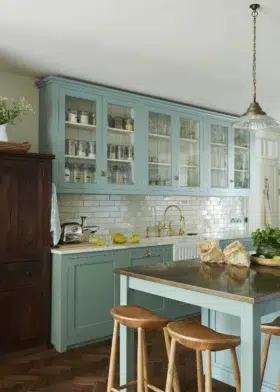
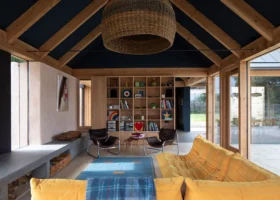








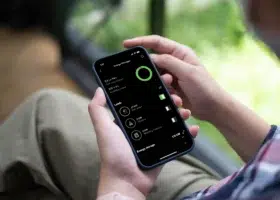
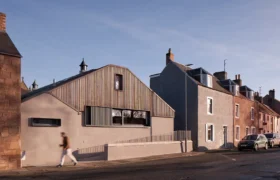


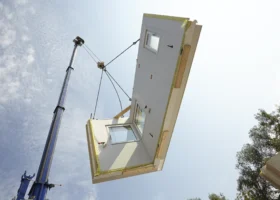
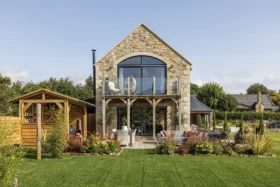
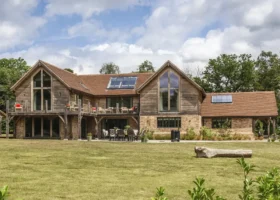
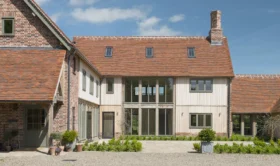
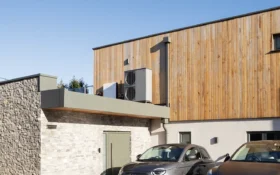

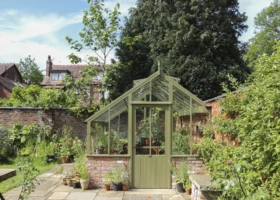


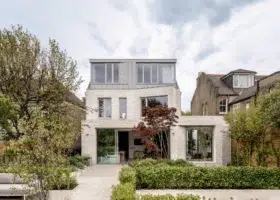
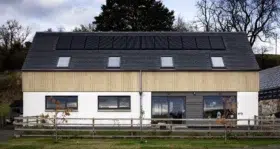
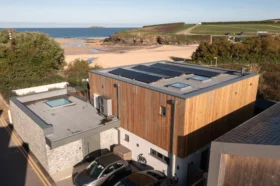


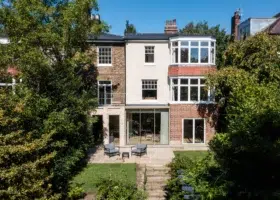
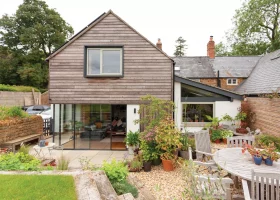






















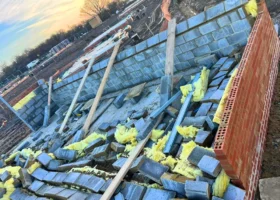


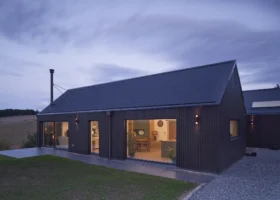
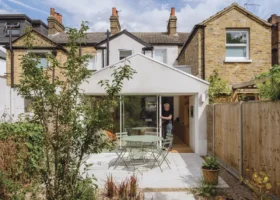







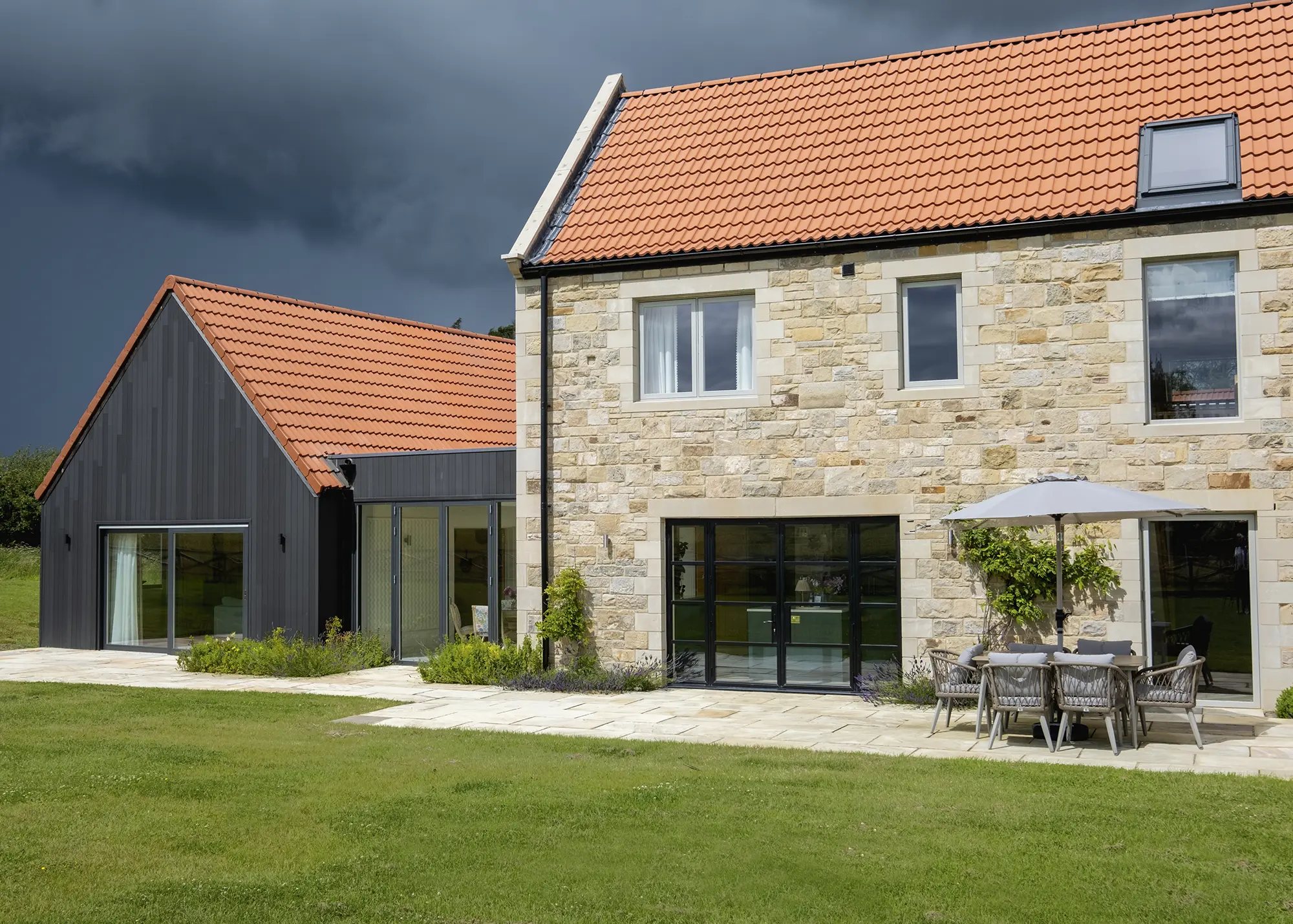
 Login/register to save Article for later
Login/register to save Article for later

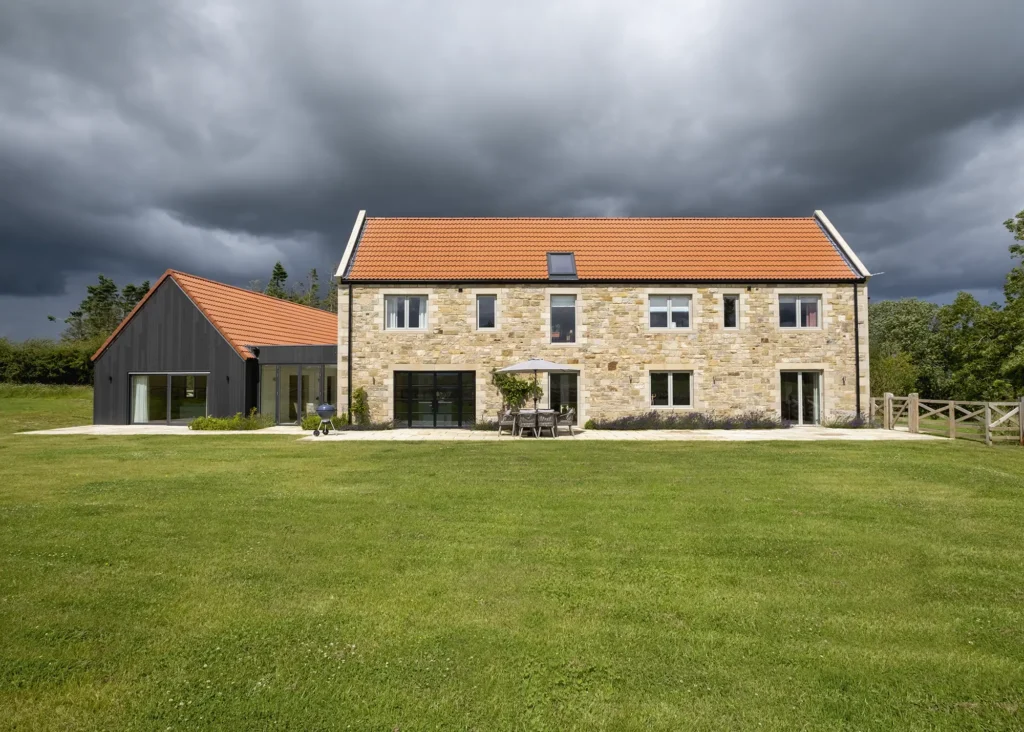
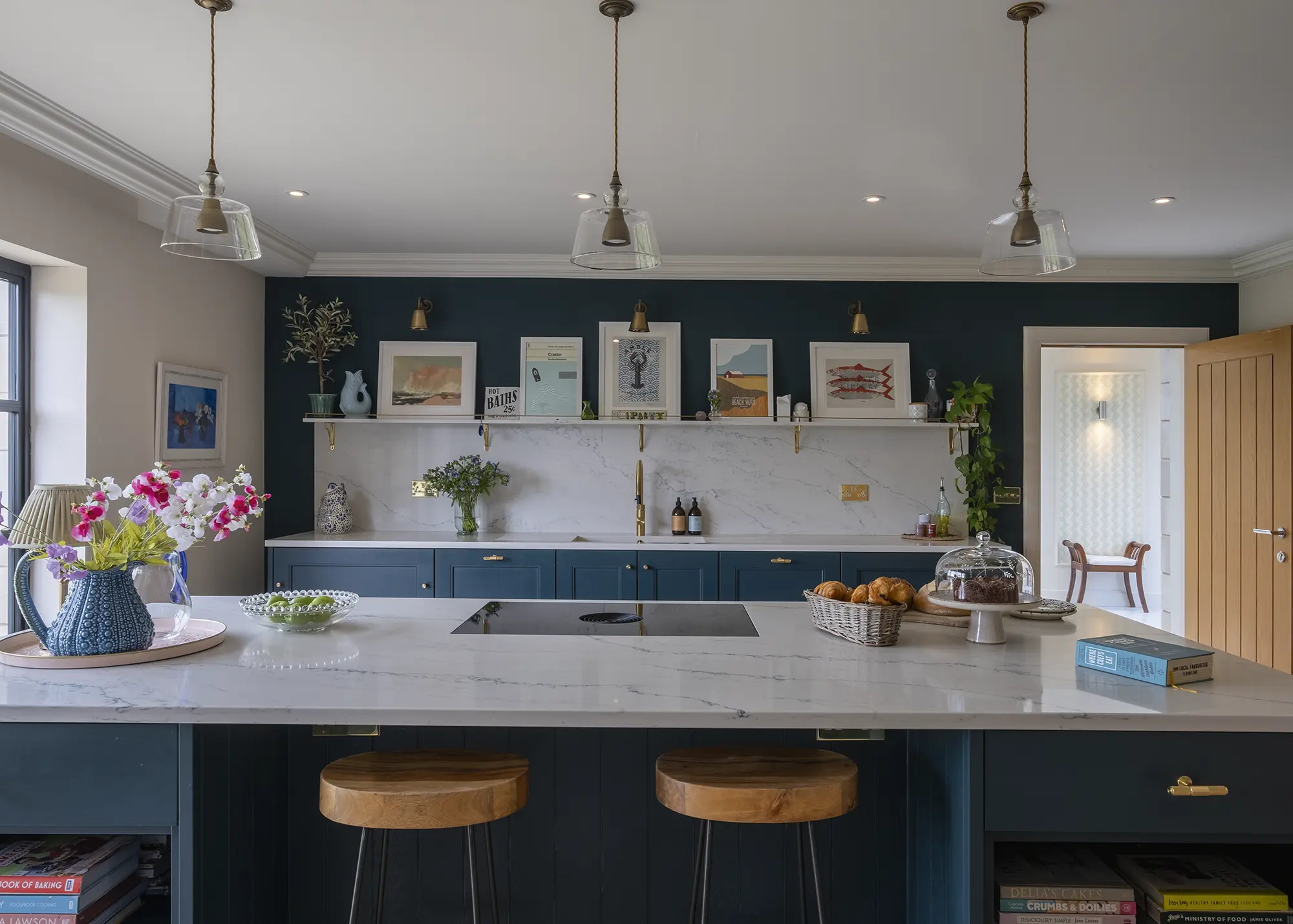
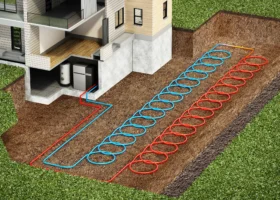

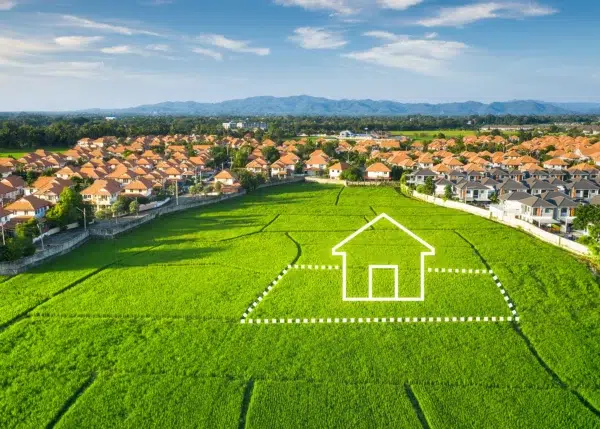
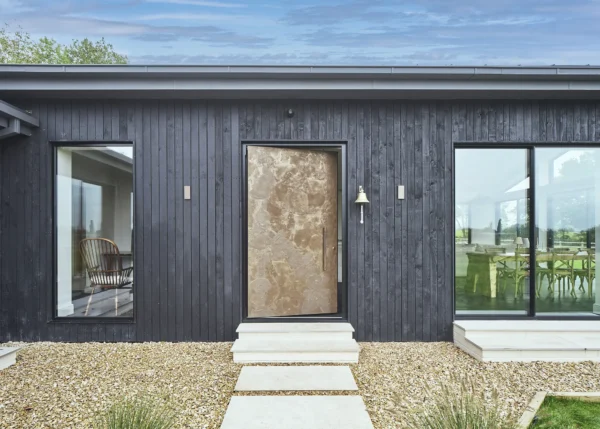
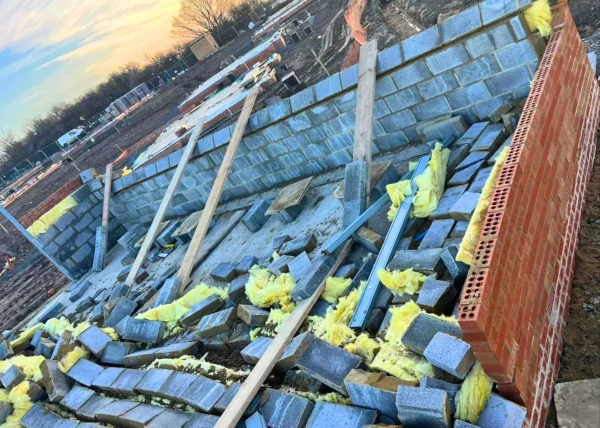
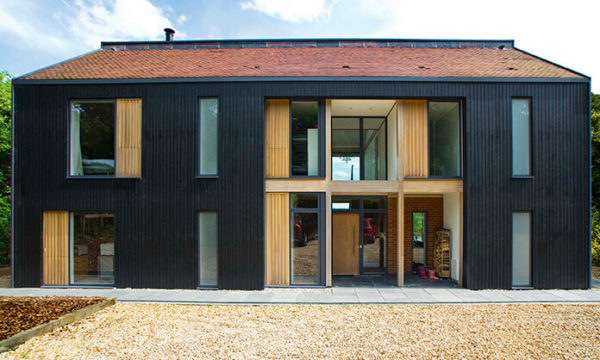
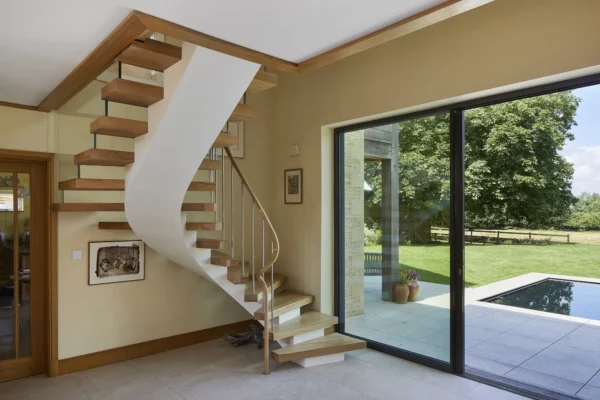
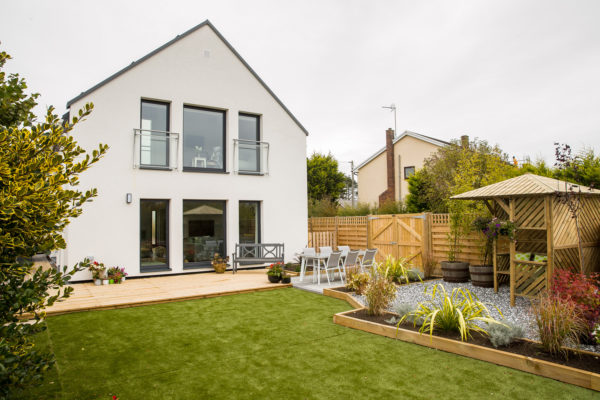
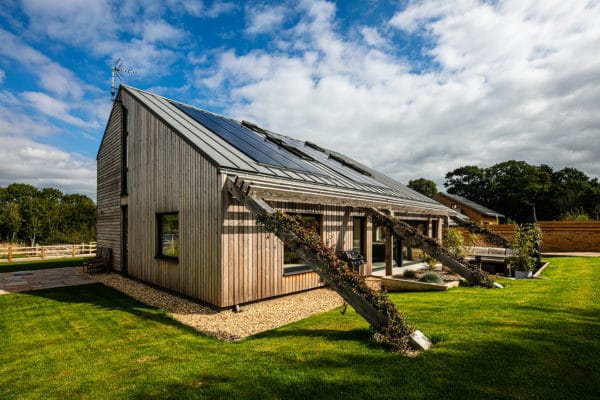
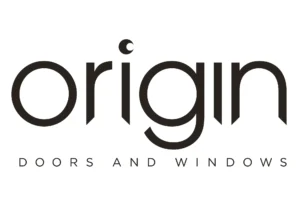




You say that “intelligent lighting systems” are excluded from VAT reclaim, are you sure about that? The HMRC VAT reclaim notes include “central controls (to the extent that these relate to light, heat or ventilation)” as “articles incorporated into the building” and therefore allowable. Does this not cover “intelligent lighting systems” ?
Hi Dave,
You are correct that central controls for lighting, heating & ventilation are now included as part of the zero-rated VAT scheme. The interfaces – touchscreens, remote controls etc – remain ineligible for zero-rating.
We’ve updated the article accordingly – thanks for bringing it to our attention.
Best wishes,
Chris
does the cost of the build include the price of the land or not, and how long after building can you sell (if needed) to still be able to reclaim vat
Could I ask a question regarding VAT. We have planning permission to build in our existing horse riding/stable yard business. The house permission was granted with the condition that it is solely for purposes for the business. This will be our family home so that our business can continue. My question is will our self build still be zero VAT. The business itself is not VAT registered.
I hope that makes sense!
Jo
Hi Jo,
did you get your VAT back, I’m having a nightmare trying to reclaim it
One of our clients fits blinds and his customer has queried the VAT on his quote. The self build is complete so just wanting to clarify that he is still fine to charge VAT as normal, as he is fitting made to measure blinds on a finished house. Or will he only charge Zero Rate VAT on the labour of fitting?
I am just starting the actual build. We are now excavating the sloping site. Can we reclaim the VAT on the removal of earth off site
Hi Mark. This advice from one of our experts should help: https://www.self-build.co.uk/question/vat-free-demolition-muckaway-new-build/
Hi Ellie,
Fitting manual blinds does come under the scope of the new build VAT reclaim, so the work could be eligible. However, you’ve hit on something of a grey area here, as the issuing of a completion certificate for Building Regs doesn’t necessarily equate to works on the project no longer being eligible for zero-rated VAT. But it might.
In HMRC’s eyes it’s all about whether the works in question could be reasonably classed as being ‘in the course of construction’ as per paragraph 3.3.2 of VAT Notice 708: https://www.gov.uk/guidance/buildings-and-construction-vat-notice-708#para3-3
If the blinds were in the original building spec then that could well indicate they qualify, for instance, even if there has been a delay between the main works finishing and the blinds being installed.
Of course, if the client has already made their VAT reclaim (which needs to be done within 3 months of receiving the completion certificate anyway) then this all becomes a bit moot. They can only claim once, so after that point you’d have to treat the rest of the works as though it were an existing building for VAT purposes.
Sorry I can’t be more definitive… but hopefully this helps a bit!
Chris (editor, Build It)
Hi Chris
Thanks for your piece – very informative but can I ask about the supply of joinery more generally:
We have been asked by a client to zero rate built-in shelving and cupboards – some of which are to house MVHR units. I think these can be be zero rated but not (for example) library shelving or cupboards generally?
As HMRC can come along years later and insist we pay the VAT (it happened once!) it would like to clarify the current situation. Also does the zero rating apply to the whole invoice – i.e. labour and materials?
Thanks
Simon
Hi Simon,
HMRC issue the VAT Notice Buildings and Construction 708, which can be downloaded from https://www.gov.uk/guidance/buildings-and-construction-vat-notice-708 and is very comprehensive.
I would not advise that you print the whole of the document at this stage as it’s a large document and some of the information would not be relevant in this instance, but Section 3 on ‘Zero rating the construction of new buildings’ will guide you as to what rate to charge.
You can also ask that the clients issue you with a VAT certificate which will protect you from any potential VAT payment should you have an inspection in the future. If you obtain the certificate, store it with the client’s invoices for ease of checking.
Kathy Tisdale (Build It VAT Reclaims expert)
Do you have to inform HMRC before commencing a self build?
We are relaplacing an existing dwelling with a new self build and also building a separate annexe with full planning permission to live in whilst building the new dwelling. The annexe will remain as ancillary to the main residence . Can we claim the VAT back on the annexe as well as the main house.
My wife and I are self building our for ever home in our mid 60s, so rather a stressful time to come.
The plans have been agreed by the council which has taken 13 months.
The original bungalow will be knocked down and the new footings will be laid, ready for the build of the new dwelling.
My question is, the company that will be demolitioning are willing to not be charging us vat on labour nor the materials they purchase, as they can claim the vat back themselves, but how can I be sure they are not charging me vat, while claiming the vat themselves, other than asking to see the invoices for the materials?
TIA
Hi Malc,
The construction of a new home that is going to be your main residence is zero-rated for VAT. Therefore, the company that you are going to appoint to carry out the demolition of the old property and associated works must zero-rate their work and not charge VAT on any labour nor the supply of materials.
So, there shouldn’t be a need to ask the company to see the invoices from their suppliers, and don’t be surprised if they refuse your request to do so. Instead, double check that the quotation for the works they have given you states that VAT will be charged at 0%. Also ensure that you receive a VAT invoice showing the works carried out and materials supplied have been zero-rated in order to ensure you are being charged the correct rate of VAT. This invoice should also be dated, show their VAT number and the company’s full details, such as their name, address and contact information.
Kathy Tisdale (Build It’s VAT reclaims expert)
Hi, We are in the process of building and have a builder for the shell and we are going to fit internals such as kitchen, bathrooms and flooring etc. The builder is not charging us VAT and will reclaim once they have finished. I see the HMRC state only one VAT claim can be made, does that mean we won’t be able to make a claim for the materials we buy e.g. kitchen units or are will still able to make a ‘Self Builders’ claim independently of the builder? Thanks
Hi Dee,
The builder is correct in charging VAT at zero rate if you are building your new home and it is not a conversion. Your builders are able to reclaim the VAT on purchases being used in your new home through their accounting and HMRC’s VAT system. So, they take the financial costs until they make a reclaim through their accounts.
Although you have instructed the builders to carry out the works on your behalf, you are still the self builders. HMRC’s DIY VAT team process claims under the DIY VAT Homebuilders Scheme, which is independent to your builder, while also enabling individuals to make their own VAT reclaim for materials used to build new home. You can only make one claim at the end of your build once you obtain the completion certificate from your local council’s building control department or alternatively an independent company offering these services.
Kathy Tisdale (Build It’s VAT reclaims expert)
Hi Kathy,
I am trying to determine whether our project will be eligible for VAT refund as a ‘new build’.
Our planning if is for remodelling of an old bungalow, however when we build almost everything aside from one wall will be knocked flat and rebuilt – due to cracked walls and dodgy foundations.
A developer friend advised that due to only one wall being retained and used in the new construction it will constitute a new build and be eligible for the VAT refund.
Do you know if this is the case?
Many thanks for any advice you can provide on this.
Joe
Hi Joe,
To answer your question, it would be useful to have more information. It would be beneficial to know if you have just purchased the property, if so, has it been empty for any length of time or whether you had been living in the bungalow. It is unclear as to whether you have started the works.
The problem is that your planning consent states remodelling of an old bungalow and therefore you do not meet the legal side of the HMRC DIY VAT Homebuilders Scheme as your planning is not for a new build. HMRC state that a new build can be built on the slab and therefore the footprint of a pre-existing building, can have one notable wall or if on a corner plot then two adjoining walls usually stipulated by the planning department as they consider the property’s facade worthy of being preserved.
HMRC state that they look at each claim on an individual basis, so if you have already started or have completed the works, I would submit a claim and back it up with further evidence. You could also approach the local planning department/building control and ask very very nicely if they can issue you with a letter that you can use as evidence, stating that, due to the dilapidated state of the property, the works carried out constitute to it being a new build.
If the planning office do not supply you with any information in your favour, you could submit your claim with photographic evidence showing the site during the works, especially the one wall standing,
If you have not yet started on the works, I would suggest you go back to planning and resubmit a planning application for a new build. You may need a report from a structural engineer stating that the current building is not fit for purpose in support of your planning application.
Best of luck with your project,
Kathy Tisdale (Build It’s VAT reclaims expert)
We are looking at purchasing an ex police house to knock down and put a new build on the plot. This property purchase going to include vat at 20%. Can we reclaim this along with any other vat at the end of the build?
HI,
Are there any differences between, Approved Permitted Development and Approved full development? I was told that Permitted development for a barn conversion is still subject to 5% vat on labour and materials. Where approved full planning permission for essentially a new build and not a conversion is labour and materials at 0% VAT… is this correct?
We are weighing up the options (if we gain approved permitted development) whether then to apply for full planning to build as a ‘new build’ rather than a conversion. If there are any VAT benefits it would be good to get clarification
Thanks, Chris
Hi there
Can you please help me with this… The question relates to a reduced rate of VAT (5%) in instances with the property was unoccupied for 2+ years.
We purchased the house after probate. I believe it may have been unoccupied for the prescribed period of 2 years. As the house sits on greenbelt, we had to go through a series of planning applications which have taken us around 1.5 years to obtain.
1. Are we eligible for the reduced rate of 5% (due to it being vacant prior to purchase) OR does this not apply to us as we have been living in the property during the period of the planning applications? The property is in Loughton, Essex, IG10.
Assuming we don’t qualify for the above…..
2. We have consent to substantially extend an existing house which will involve rebricking the entire house (taking down the existing outer skin/brickwork the replacing with new). Will this qualify as “new build” and therefore 0% vat? The planning consent is for “extensions” (not “new build”).
Thank you in advance for your assistance.
Carrying out work to an existing building will typically incur a VAT fee at the standard rate of 20%. However, you may be able to pay VAT at the reduced rate of 5% if you’re renovating or altering an eligible dwelling, as long as it has not been lived in during the two years immediately before your work starts. So, if the qualifying residential premises have not been lived in during the two years immediately before your work starts, all of your work is reduced-rated.
However, there are some exceptions to the rule for people who are living in the premises while refurbishment work is being carried out. In order to qualify for the reduced rate of 5% while living in the property, you must move in on a day after the works begin.
If you’re living in the premises before the work begins, or anyone else has lived in them during the previous two years before you start the work, you will be subject to the standard 20% rate for VAT. So, as you have already been living in the house prior to any works being started, you unfortunately would not be eligible for the reduced VAT rate.
As to whether or not your project meets the criteria for zero-rated VAT, your planning permission will need to be for a new build in order to qualify. So, as the permission granted states that it’s for an extension, you would not be entitled to have any works invoiced at the 0% VAT rate.
If you were to qualify for the reduced VAT rate of 5%, you would need to ensure you engage VAT registered trades to complete the building work, so that they can invoice you at the reduced rate, and you must also provide them with proof that the property was vacant for over two years prior to any work carried out.
If you plan to carry out any of the work yourselves and purchase materials to do so, you have to pay the standard VAT rate of 20% from your suppliers and no part of this can be reclaimed on your side.
Best of luck with your project,
Kathy Tisdale (Build It’s VAT reclaims expert)
I am so pleased I have come across this site as it is very informative thank you.
I have a question please, we are supplying and fitting joinery items on a new build project that is zero rated for VAT.
Do we charge VAT on our Site Surveys & Drawings at Standard Rate VAT?
Also, we are supplying and fixing joinery items, i.e. Utility Room Cupboards, Built in storage cupboards, Built in Wardrobes, shelving units. These items will be incorporated in the building and would need tools to remove them. Would these items all be zero rated?
I want to make sure I invoice correctly so that there are no come backs from HMRC regarding incorrect VAT charges.
Thank you for your assistance in this matter.
Hi
Please could you help me with how I can claim vat back on our semi-detached project
My Sister and I are self building a pair of semi-detached houses (labeled Plot A and Plot B, each with its own completion certificate)
I will be building and paying for the materials to make the complete shell watertight and will be moving in way before my sister completes and finishes her side
Will I be able to claim the VAT back for the materials I’ve brought to make the complete shell watertight, plus the internal materials brought for my side (Plot A) when I’ve finished and received the completion certificate for it
My sister would then claim for the materials for ‘fitting out’ her side when she’s finished and receives her completion certificate for hers (Plot B) at a later date
or
could I make a claim for the complete shell and Plot A internals with my completion certificate. Then at later date, place a new VAT claim for internals of Plot B when its finished and have received its completion certificate, as I’m building it for a relative who intends to live there
This would just mean I could buy the all materials and save my sister setting up her own merchant accounts for her side
Many Thanks
Stuart
Can someone clarify matters regarding 5% on renovating properties empty for 2yrs plus.
I know you can employer a VAT registered builder and pay at 5%. However, I’ve been told and Gov.uk website seems to suggest that you can do jobs DIY and re-claim the VAT or 15% of it by submitting receipts for materials bought eg plasterboard etc even from a builders merchant. Is this correct?
What evidence do you need to prove property been empty? Electoral role not up to date and cannot get council tax info for those years. Will solicitor letter suffice supported by evidence owner was in care home and also can get neighbours to sign affidavit?
Hello – please can you help with the VAT position regarding the new electricity/water/bt installation. We qualify as a zero rated new build ie. Back garden development of a new house that will become our new residence.
UK Power have said we have to pay standard rate VAT and claim it back but I have seen conflicting advice on other forums. Also how do we know that contractors are passing on material costs net of the VAT that they have incurred. Feeling overwhelmed! Thank you in advance 🙂
Hi Christopher,
Thanks so much for you question. For carrying out a renovation on a property not lived in for 2+ years you will get a reduction in the VAT from the standard rate of 20% down to 5% by any VAT registered trade carrying out any of the works. You will need to provide evidence by way of a letter or notice which you should be able to get from the Empty Home Officer at your local council or the local rating office.
Unfortunately, you cannot reclaim the 5% charged nor can you reclaim any VAT charged by builders’ merchants.
If a property has been unlived in for 10+ years then this is classed as a conversion by HMRC and the 5% vat rate is incurred which can be claimed back via the Self build VAT Reclaim scheme.
Kathy Tisdale, (Build It’s VAT Reclaims expert)
Hi Chris,
Thanks so much for your question. If your planning states that the building works are a conversion and therefore a change of use then the VAT used by VAT registered trades should be 5%. Note that HMRC cannot refund incorrectly charged VAT. Where your project is to build a new home for you or a family member to live in and your planning states it a new build then the Vat rate for trade to charge is Zero% VAT. So yes, you are correct.
A talk with the local parish council and local planning office will give you an indication as to whether they would entertain a new build on the site depending on their policy of new homes in the country-side. Once you have this information it will determine the type of build allowed on the site.
Kathy Tisdale (Build It’s VAT Reclaims expert)
Hi Lisa,
Professional services (such as drawings, surveys etc) are usually charged at the standard rate of VAT – so I believe you should be charging 20% on these.
Built-in joinery is a bit more of a grey area. I believe utility cabinets should fall under the same rules as kitchen cabinets (ie zero-rated) providing they’re installed during the build.
Some built-in wardrobes qualify, but there are very specific rules about this. For instance, the side and backs of the wardrobe must use 3 of the house’s walls (rather than be built out in timber or suchlike).
There’s a fair bit of guidance on wardrobes and other fitted furniture on the government’s advisory notes for the VAT scheme: https://www.gov.uk/guidance/vat-refunds-for-new-builds-if-youre-a-diy-housebuilder#:~:text=Items%20that%20are%20not%20furniture%20but%20are%20building%20materials%E2%80%AF%C2%A0
Hope this helps!
Chris Batesmith (Build It Content Director)
Hi Tracey,
Thank you for your question!
On a new build, any trade visiting site to do work on qualifying works or services should not be charging VAT in the first instance. If you were to pay VAT, as in your example – UK Power Network, HMRC will not reimburse VAT charged incorrectly, which your example would be. To go into more detail, you specifically mentioned, electric supply, water supply and broadband supply but I will add gas supply to your list.
Of those 4, all are qualifying works, except for broadband. Broadband communication works do not qualify. The new supply of gas, water or electric should be zero VAT for the materials and the work of bringing the new supply into the site at source. This statement applies to the actual work of getting the supply to your property only, so potential additional costs such as licencing or temporary traffic lights or testing fees would not qualify, so they would be VAT chargeable but not reclaimable. This applies to new supplies only, so a replacement dwelling, where the current supply of the above 3 are having to be disconnected and then reconnected to the new property, does not qualify and VAT would again be chargeable and not reclaimable in the disconnection at the start and the reconnection towards the end.
For your second question, the construction of a new home that will be your main residence, is zero-rated for VAT. Therefore, the company you appoint to carry out the demolition of the old property and associated works must zero-rate their work and not charge VAT on any labour nor the supply of materials.
So, there shouldn’t be a need to ask the company to see the invoices from their suppliers. If they are a reputable company, they will be using an HMRC approved account package in which everything is recorded, and some any have their accounts audited. Should a VAT registered business have an inspection by HMRC and be found to have carried out tax fraud or evasion, they could be facing hefty fins or even a custodial sentence.
Double check that the quotation for the works they have given you states that VAT will be charged at 0%. Also ensure that you receive a VAT invoice showing the works carried out and the materials supplied have been zero-rated in order to ensure you are being charged the correct rate of VAT. This invoice should be dated, show their VAT number and the company’s full details.
Although you have instructed the builders to carry out some works on your behalf you are still the self-builders. HMRC’s DIY VAT team processes claims under the DIY VAT Homebuilders Scheme, which is independent to your builder’s claim – so it’s not mutually exclusive. This enables individuals to make their own VAT reclaim for materials they’ve purchased themselves to build a new home. You can only make one claim under the DIY scheme at the end of your build, once you obtain the completion certificate either from your local council’s building control department or an independent company offering VAT reclaim services.
Good luck with the project.
Many thanks,
Andrew Jones (VAT expert)